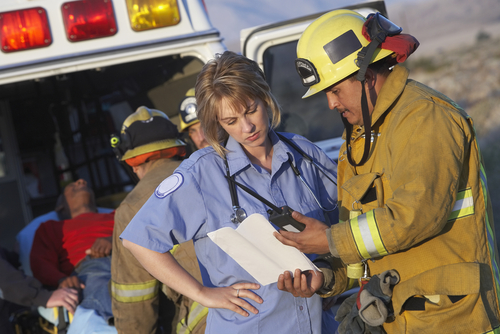
In our last post, we discussed the five-step process for identifying and resolving risks for firefighters. While there is no one-size-fits-all policy, thoroughly examining specific risks that your clients face and working to resolve and mitigate them can reduce injury and protect their bottom line. In this article, we’ll take a closer look at how to identify the known risks in the workplace so that you can share this information with your clients. Even more importantly, protect their operation with a customized a Firefighter General Liability policy.
Identifying risks.
Identifying known risks requires more than just evaluating the daily life of a firefighter. The known perils of the job should be evaluated based on the risk factor and the likelihood of it occurring, and evaluating how to mitigate these exposures.
When encountering an unusual situation or a unique event, it can be very difficult to accurately identify risks. To do so effectively, use all available resources, including accident/injury statistics, fire case studies, and your and others’ experiences. Different situations, such as gas leaks, expanding fire conditions, and building collapses, present different risks. When identifying the risk, always formulate a safety plan for the worst-case scenario; if you are prepared for that, anything that occurs short of that will be easier to handle, explains Fire Engineering.
Frequency and threat level.
- High frequency/High severity- Such as smoke inhalation.
- High frequency/Low severity- Such as muscle injuries.
- Low frequency/High severity- Such as a building collapse.
- Low frequency/Low severity- Such as stepping on sharp shards of wood.
Prioritizing risks.
Focus on the high severity issues first as they bear the most significance. Determine how to best mitigate the identified risks. Exposure avoidance, segregation of exposures, contractual transfer, and a solid loss reduction/prevention program are common recommendations. Choosing the one most effective for the situation will depend on the specific circumstances, explains the article.
Relevant risk factors to consider.
- Vehicle maintenance and safety features
- Vehicle operations.
- Workplace safety.
- Hydrants
- Disaster preparedness.
About Provident Fire Plus
At Provident Fire Plus, we understand the risks that volunteer firefighting departments face on a regular basis. Our unique underwriting goes beyond what is typically included in insurance policies, extending coverage to commercial autos, line of duty protection, damage to third party property, and more. For more information about our comprehensive policies and how we can work for your clients, contact us today at (855) 201-8880.

